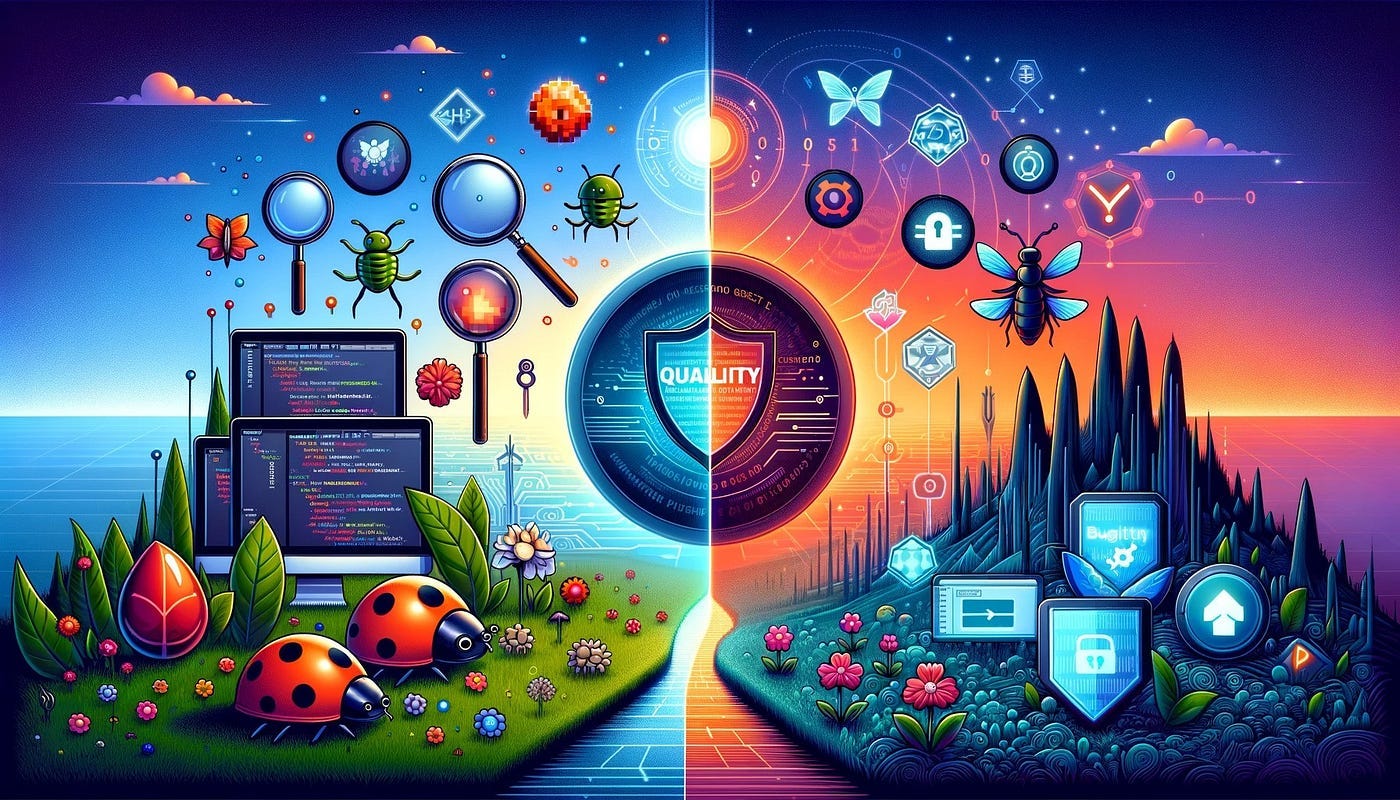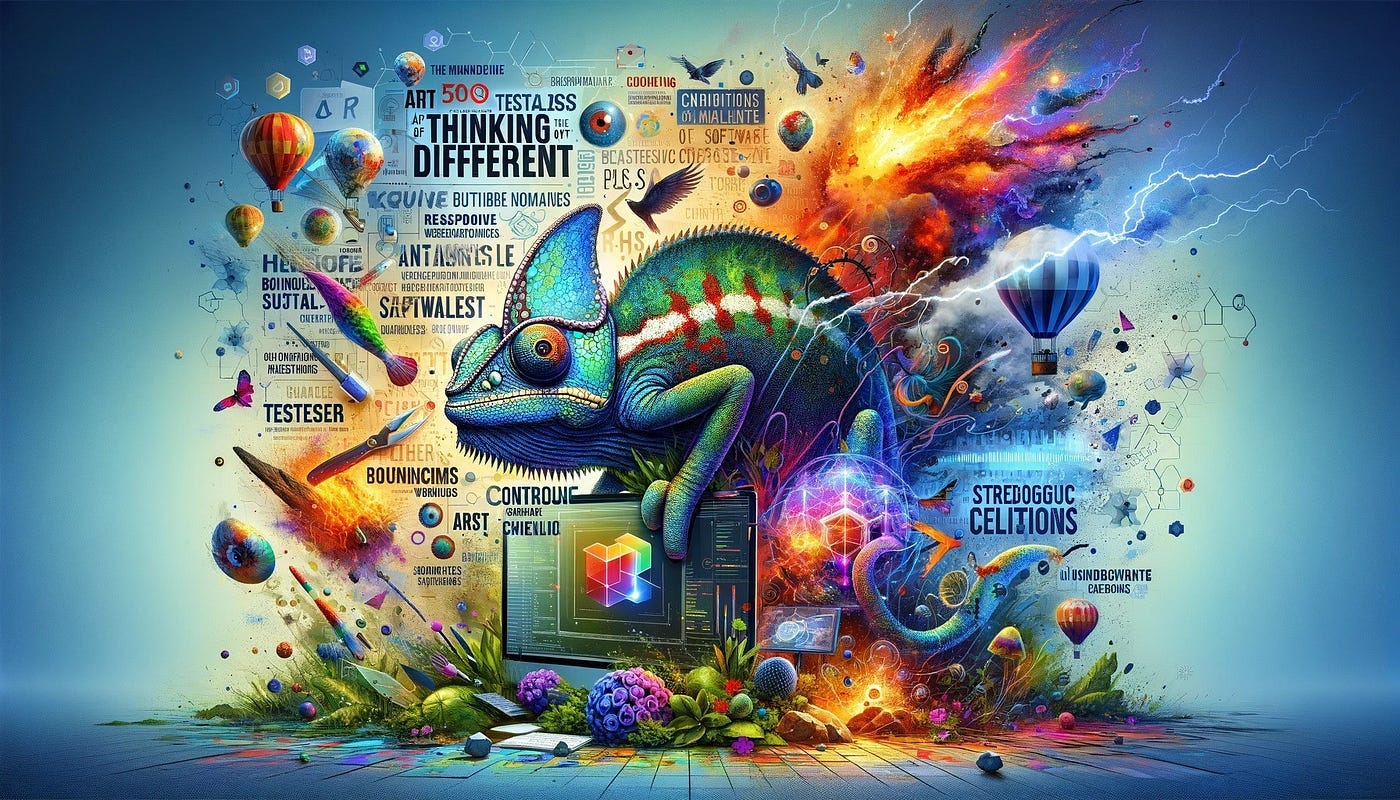The Unsung Heroes of Software: Unveiling the Hidden Depths of Testing Beyond Bug Hunts
From Artistic Thinkers to Collaborative Guardians, Exploring the Unexpected World of Testers
Software testing: it conjures images of tireless clicking, mountains of bug reports, and the ever-present pressure of deadlines. While these elements remain true, they paint an incomplete picture of a profession brimming with unexpected complexity, strategic thinking, and even a touch of artistic flair. Whether you’re a newcomer curious about the testing world or a seasoned veteran seeking fresh perspectives, prepare to have your preconceptions challenged as we delve into the hidden depths of this multifaceted field.
From Bug Hunters to Quality Guardians
The archetypal image of a tester as a lone gatekeeper, meticulously hunting bugs before release, holds some truth. However, the modern testing landscape demands a more proactive and collaborative approach. Today’s testers are quality champions, seamlessly integrated into the development process from its inception. They actively shape requirements, participate in design discussions, and identify usability issues early on, preventing costly rework later. Think of them as quality evangelists, whispering valuable insights into the developer’s ear and ensuring quality is woven into the very fabric of the software.
But how does this translate into actionable strategies for budding and veteran testers? For beginners, it’s crucial to step beyond script-based testing and embrace exploratory testing. This involves approaching the software like a curious child, playfully experimenting, pushing boundaries, and envisioning unexpected user interactions. Don’t be afraid to break things — in a controlled manner, of course! By uncovering edge cases and hidden weaknesses, you become a valuable partner in ensuring the software’s robustness and resilience.
For seasoned testers, the journey never ends. Consider mastering advanced testing methodologies like chaos engineering, which simulates unexpected events and helps you stress test the system’s ability to handle the real world’s unpredictable nature. Additionally, become a mentor and advocate for quality within your team. Share your knowledge with developers, suggest early integration of automated testing tools, and actively participate in code reviews. Remember, you’re not just a bug finder but a quality guardian, shaping the foundation of the software’s success.
The Art of Thinking Different
Testers aren’t robots blindly following scripts. They’re the chameleons of the software world, adept at morphing into unpredictable users. This unique “thinking differently” skill is as much art as science. It’s about envisioning outlandish scenarios, pushing boundaries, and breaking things in ways developers never dreamed of. This “controlled chaos” isn’t mere destruction; it’s a strategic exercise that uncovers hidden weaknesses and ensures software can withstand the unpredictable whims of the real world.
But how do you cultivate this unconventional way of thinking? For beginners, starting with lateral thinking puzzles can be a great way to train your brain to explore outside the box. Additionally, practice observing users in their natural environment. What unexpected things do they do? What challenges do they face? By stepping outside your perspective and understanding how users interact with software, you unlock a treasure trove of creative testing approaches.
For seasoned testers, consider delving into the world of behavioral testing. This involves analyzing user behavior patterns and motivations to identify potential usability issues and design flaws. Additionally, participate in bug bashes or hackathons focusing on unconventional thinking. These exercises help you discover vulnerabilities and hone your ability to approach problems from entirely new angles.
The Symphony of Skills
A symphony conductor juggles multiple instruments; a tester, a diverse arsenal of skills. While a solid technical foundation in scripting languages, automation tools, and testing frameworks remains essential, it’s just one piece of the puzzle. The magic lies in the blend of soft skills: clear communication with stakeholders, passionate advocacy for quality, and the ability to foster a collaborative testing culture.
This symphonic approach starts with mastering communication. Learn to articulate complex technical issues in clear, concise language that resonates with technical and non-technical audiences. Additionally, actively participate in discussions and meetings, sharing your testing insights and advocating for quality at every stage of the development process. Remember, quality isn’t an individual responsibility; it thrives on collaborative efforts.
For experienced testers, consider exploring the realm of coaching and mentoring within your team. Share your knowledge with junior testers, help them develop their skills, and encourage them to think critically. Additionally, actively participate in industry forums and communities, sharing your experiences and learnings with the broader testing world. You elevate the testing profession by empowering others and contributing to the collective knowledge base.
The Future Beckons
The testing landscape is a dynamic beast, constantly evolving with new technologies and emerging challenges. Cloud computing, blockchain, and the ever-increasing reliance on AI introduce exciting opportunities and uncharted territories. Testers who embrace continuous learning and hone their diverse skill will thrive in this ever-shifting landscape. Consider specializing in emerging technologies that align with your interests and the industry’s demands. Mastering tools like cloud-based testing platforms or security testing frameworks can position you as a valuable asset in an increasingly complex technological world.
But remember, the essence of testing lies not just in technical prowess but in adaptability and human ingenuity. As AI-powered automation takes over mundane tasks, testers will need to focus on strategic thinking, creativity, and critical analysis. Hone your ability to interpret data, identify patterns, and anticipate potential risks. These skills, combined with your unique human touch, will ensure you remain irreplaceable in the face of technological advancements.
So, the next time you encounter a seamless app or a website that simply works, remember the testing professionals behind the scenes. They’re not just button-clickers and bug reporters; they’re artists, strategists, and guardians of quality, shaping the software experience with every test they execute. And for both newcomers and veterans, remember, the journey of a tester is a continuous adventure, filled with learning, challenges, and the constant pursuit of excellence. Embrace the unexpected, hone your unique skills, and keep exploring the hidden depths of this ever-evolving field. The future of software quality depends on it.







[[..Pingback..]]
This article was curated as a part of #122nd Issue of Software Testing Notes Newsletter.
https://softwaretestingnotes.substack.com/p/issue-122-software-testing-notes
Web: https://softwaretestingnotes.com